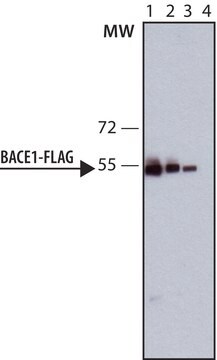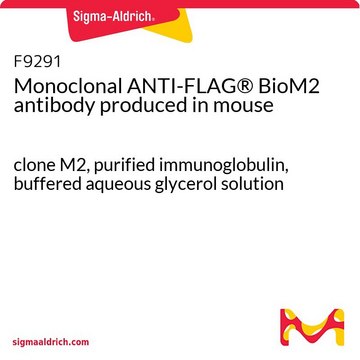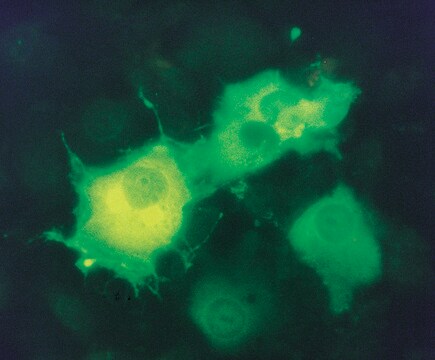SAB4301135
Anti-FLAG Tag antibody produced in rabbit
affinity isolated antibody
Synonim(y):
Anti-ddddk, Anti-dykddddk
About This Item
Polecane produkty
pochodzenie biologiczne
rabbit
Poziom jakości
białko sprzężone
unconjugated
forma przeciwciała
affinity isolated antibody
rodzaj przeciwciała
primary antibodies
klon
polyclonal
Postać
buffered aqueous solution
reaktywność gatunkowa
all
stężenie
1.4 mg/mL
metody
western blot: 1:1000-1:5000 (Cell Lysate)
izotyp
IgG
sekwencja immunogenna
DYKDDDDK conjugated to KLH (synthetic peptide)
Warunki transportu
wet ice
temp. przechowywania
−20°C
Opis ogólny
Specyficzność
Immunogen
Zastosowanie
- western blotting
- co-immunoprecipitation
- immunofluorescence studies
Western Blotting (1 paper)
Cechy i korzyści
Postać fizyczna
Informacje prawne
Oświadczenie o zrzeczeniu się odpowiedzialności
Nie możesz znaleźć właściwego produktu?
Wypróbuj nasz Narzędzie selektora produktów.
Kod klasy składowania
10 - Combustible liquids
Klasa zagrożenia wodnego (WGK)
WGK 1
Temperatura zapłonu (°F)
Not applicable
Temperatura zapłonu (°C)
Not applicable
Certyfikaty analizy (CoA)
Poszukaj Certyfikaty analizy (CoA), wpisując numer partii/serii produktów. Numery serii i partii można znaleźć na etykiecie produktu po słowach „seria” lub „partia”.
Masz już ten produkt?
Dokumenty związane z niedawno zakupionymi produktami zostały zamieszczone w Bibliotece dokumentów.
Klienci oglądali również te produkty
Nasz zespół naukowców ma doświadczenie we wszystkich obszarach badań, w tym w naukach przyrodniczych, materiałoznawstwie, syntezie chemicznej, chromatografii, analityce i wielu innych dziedzinach.
Skontaktuj się z zespołem ds. pomocy technicznej














